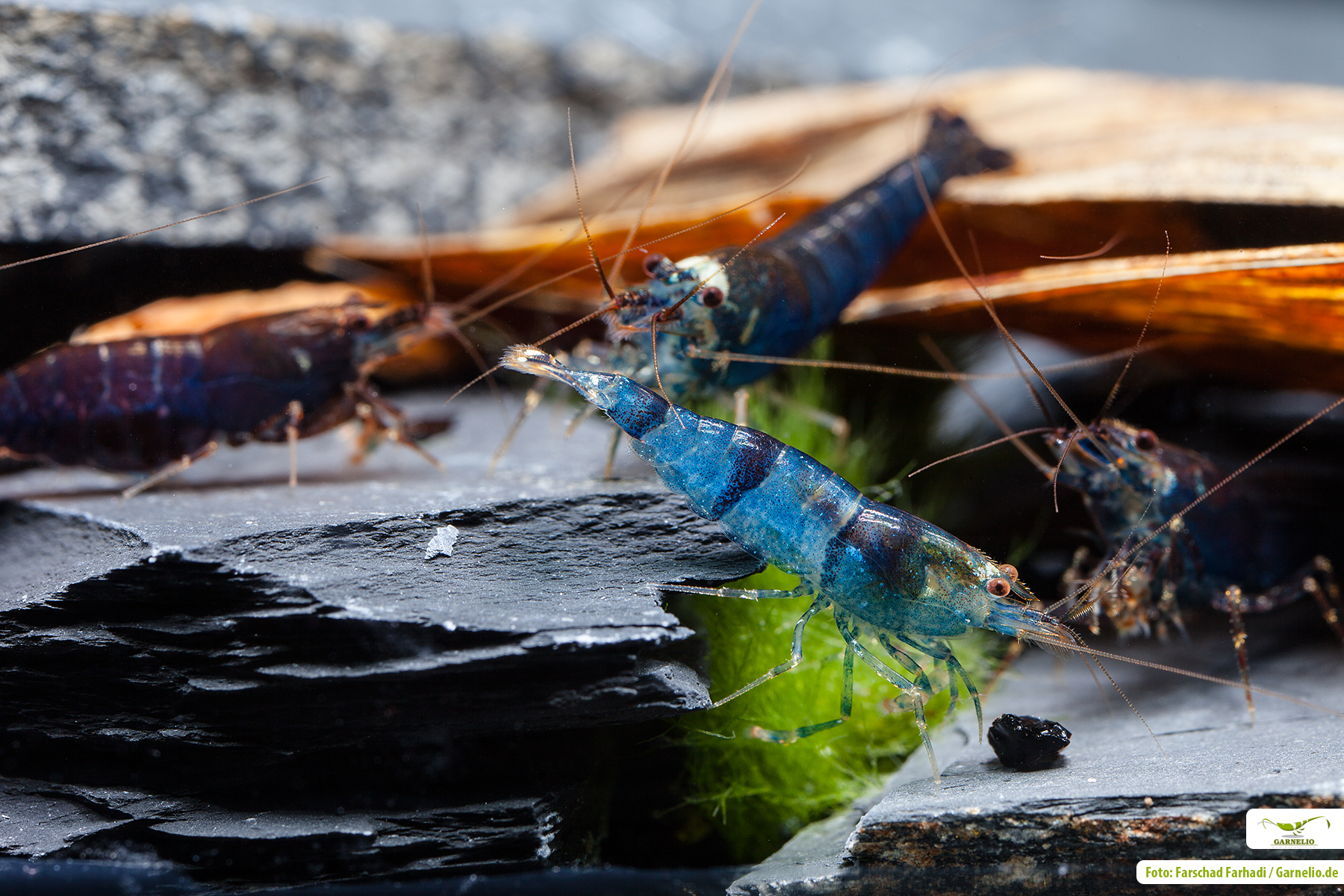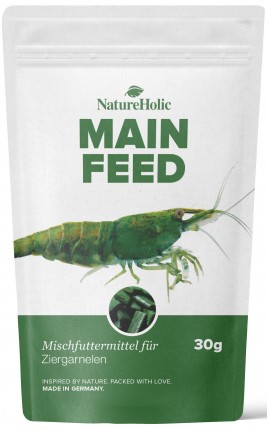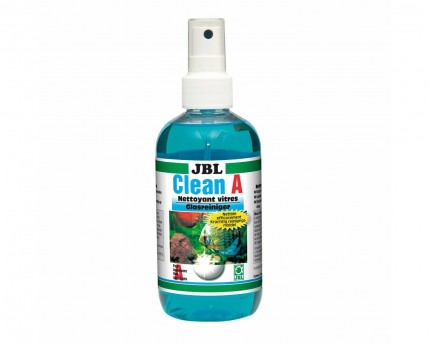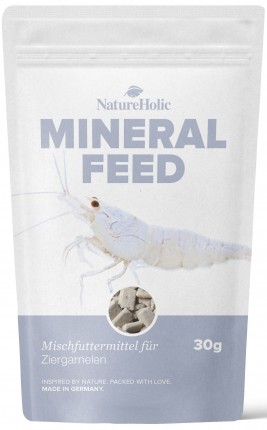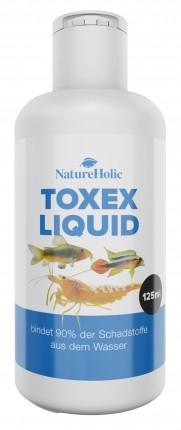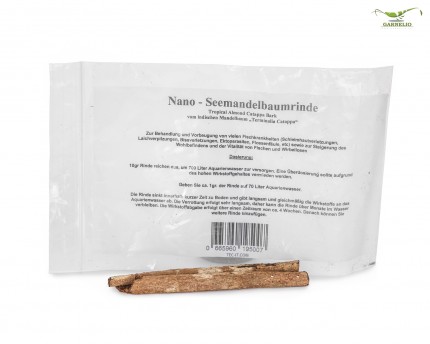Shrimp death - reasons and remedies
Shrimp are on the one hand incredibly robust, but on the other hand also incredibly sensitive. Especially when buying new animals or problems in the aquarium can lead to unclear shrimp death. We would like to give you some help here, which you can use to find out the causes of shrimp deaths and, if necessary, turn them off.
As a precautionary measure in advance: Dead shrimp are often eaten by their aquarium mates. However, please remove any dead animals you find in the aquarium - not only can they contaminate the water, but in the event of infection, they can infect the others they eat with the germs. Since it is usually not possible to say with 100% certainty what the respective animal died of, you should therefore always collect dead shrimp as a precaution.
Shrimp death due to bacterial infection
Typical signs of disease in dwarf shrimp are, for example, a whitish coloration of the tissue inside the body, black or brown-red, often sunken spots on the carapace or a striking white coloration of the skin. Loss of limbs or antennae or sitting around listlessly can also be symptoms of disease, as can refusal to eat (recognizable by the empty intestine, which in properly feeding animals runs along the dorsal line as a clearly visible dark thread of intestine). However, it can just as well happen that shrimps simply keel over and die without any previous signs - this can also be a consequence of an infection with bacteria. In the case of a disease caused by bacteria, not all symptoms have to appear - this is what makes diagnosis so difficult in the case of an infection.
The death of isolated animals is observed in some cases, and in the case of highly contagious pathogens there may also be increased deaths. The pathogens of the common shrimp diseases are always present in the aquarium and they do not harm in the normally occurring quantities. Only when the animals are weakened and their immune system is on its knees, an outbreak can occur.
In the following we list the most common reasons for an infection in shrimp - without claiming to be complete.
Reasons for infection - stress
Shrimp are quite stress-prone aquarium animals. Stress can have a negative effect on their defenses, which in turn can result in a bacterial disease. Stress can be caused for example by a strong change of the water values or the water temperature, but also by a transport or the transfer into another aquarium. Also alterations or radical actions like a change of the substrate or a complete replanting in the running shrimp aquarium can cause stress. A signal for stress would be for example the fading of the animals or a noticeable apathetic behavior.
Poor acclimation of shrimp can also cause stress and in the worst case even osmotic shock and death. We therefore always recommend a slow acclimation via droplets or sipwise addition of the aquarium water over to the transport water for several hours and then transferring the shrimp with a landing net when the volume of the transport water-aquarium water mix has at least doubled.
Reasons for infection - the presence of many bacteria
Many shrimp come from very clean biotopes and they therefore do not cope well with a high density of bacteria in the aquarium water. If the germ pressure increases strongly, the probability of an illness also increases. It would be better to keep the bacterial pressure as low as possible here by adapted, targeted feeding with high-quality, easily digestible food, by regular water changes and by good aquarium hygiene.
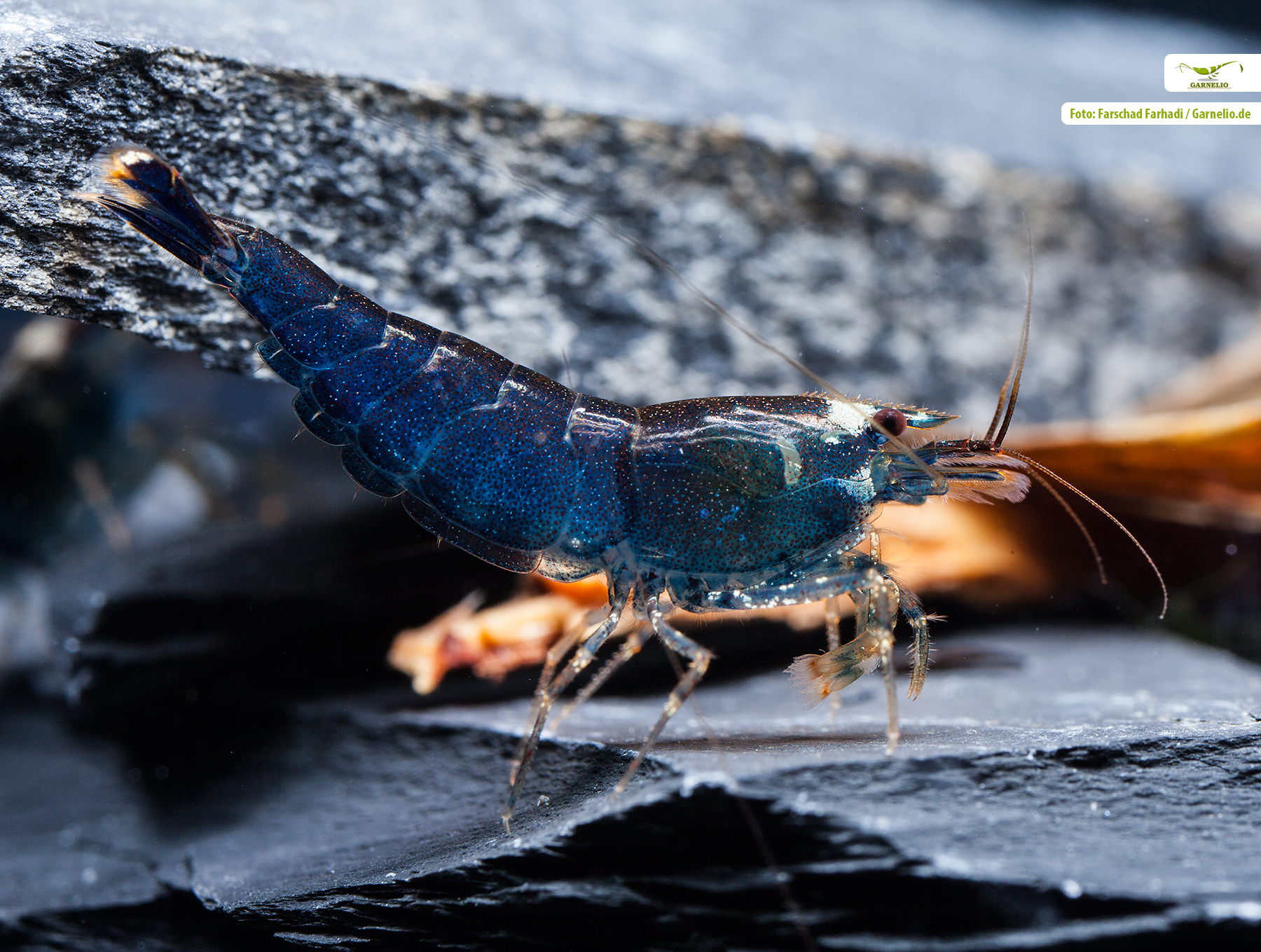
Reasons for infection - the mixing of foreign strains
If you put two strains together which had no contact before, you also risk an infection with the unknown germs - a bacterial incompatibility. This can be prevented by a quarantine of at least two weeks or by a very large water change in the target aquarium before introduction.
Remedy for infections
Weaker infections can be treated with natural remedies such as sea almond leaves, sea almond bark or dried fennel leaves and with very good aquarium hygiene and several large water changes. In case of a worse course of the disease, antibiotics may be the only solution. However, this should be considered very carefully - today we already have big problems in human and veterinary medicine, because so many strains of bacteria have already formed resistances. Changing water from an aquarium in which antibiotics have been used must always be filtered through activated carbon and must never be poured down the drain afterwards. It is better to dispose of the activated carbon in the household waste afterwards and dump the water in the garden.
To prevent disease in your shrimp, avoid stress as much as possible - use only water with the same temperature and similar water values for water changes, feed a balanced, high-quality diet and avoid radical alterations to the shrimp-stocked aquarium.
Shrimp mortality due to lack of oxygen
In heavily planted aquariums, in aquariums with a bacterial bloom (i.e. with white turbid water) or in aquariums with a lot of nutrients and a strong bacterial activity, a lack of oxygen can occur, especially at night. Plants only produce oxygen when it is light, in the dark they consume it through their respiration. Bacteria also consume large amounts of oxygen for their metabolic processes. Less oxygen dissolves in warm water than in cool water - so high temperatures can also lead to oxygen deficiency. This is especially a problem in summer.
If there are fish in the tank, they will stay at the water surface panting when there is a lack of oxygen. Shrimp also like to move upwards because there is more oxygen in the upper water layers than in the lower regions due to the gas exchange in the aquarium.
If you find the dead shrimp rather in the morning, you should definitely check if there might have been a lack of oxygen during the night. In case of weaker oxygen deficiency often only the carrying females are affected, a stronger oxygen deficiency can also claim more victims among the shrimps. If more animals show symptoms like giving up, apathetic sitting around, refusal to eat, or if the water in the aquarium is noticeably white turbid or the water temperature is too high, oxygen deficiency is definitely within the realm of possibility.
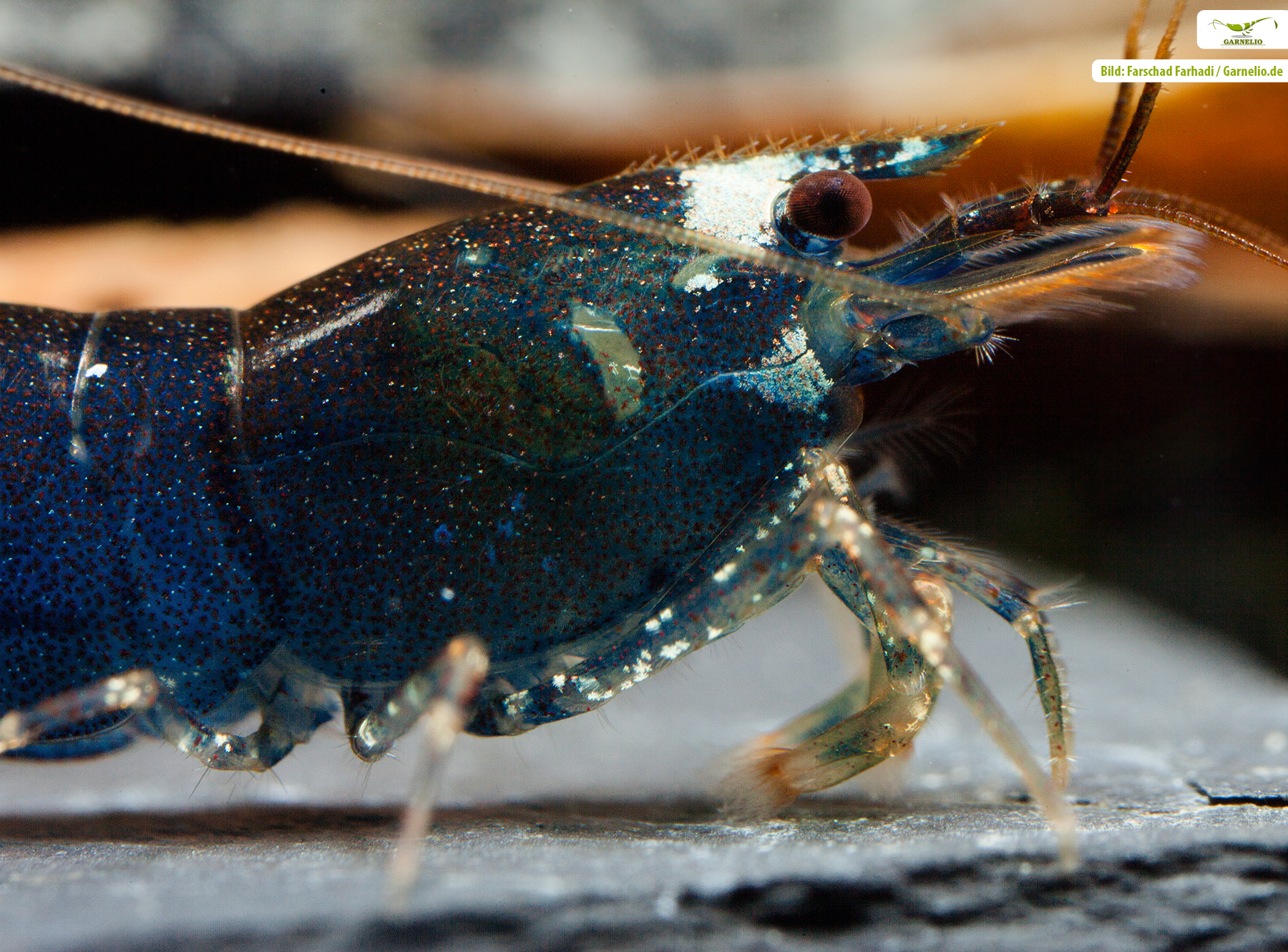
Remedy for oxygen deficiency
You can remedy the situation by providing additional aeration with a bubbling stone or a diffuser attachment on the filter. Even a stronger movement of the water surface by raising the filter and letting it splash can already cause more oxygen input into the aquarium water. Many shrimp keepers swear by an oxidizer from Söchting, through which they bring in additional oxygen. At high temperatures in summer the aquarium should be cooled. In case of oxygen deficiency due to a bacterial bloom, a large water change and/or the use of a UV clarifier, which kills the bacteria in the water, will help.
Shrimp death due to poisoning
In the case of poisoning by highly toxic substances, the problems in the aquarium occur very suddenly: The shrimp jump up and stagger to the bottom, or they keel over and die. In somewhat less severe cases, they wander upward and desperately try to escape from the water. In the case of such severe poisoning, the problems occur to a greater or lesser degree in all animals.
In case of weaker poisoning only the most sensitive and weakest shrimps die, but the other aquarium inhabitants also show problems: they are not very lively and do not eat well.
Classic cases for bad poisoning here are, for example, conventionally grown aquarium plants, which are planted in the aquarium without pre-watering and which still contain pesticides with which they were made pest-free before export. Shrimp are extremely sensitive to these substances! Vegetables bought in the supermarket can also be treated and cause shrimp mortality if, for example, waiting times have not been observed. Unfortunately, you cannot check this when you buy them. Chlorine in water can also cause mass shrimp mortality. If the tap water smells like a swimming pool, do not put it in the aquarium! Many fish medications and anti-algae agents are highly toxic to shrimp.
More insidious or weaker poisonings are rather caused by heavy metals in the water. Especially copper from copper pipes is always an issue here, especially in older houses. Rot in the substrate can also be responsible for creeping poisoning.
Remedy for severe poisoning
If signs of poisoning appear, the source of the poison (for example the new plants or the piece of vegetable) must be removed from the aquarium immediately. After that (also in case of poisoning symptoms after medication use) a really big water change of at least 90% is recommended - provided that the poison was not in the tap water. A water conditioner added to the aquarium water, such as NatureHolic's ToxEx, can bind the rest of the toxin and save the shrimp's life. Activated carbon filtration can also help bind the toxins in the water.
If you suspect that the tap water has been chlorinated - or if the massive symptoms of poisoning occurred directly after a water change, you should use distilled water from the canister, ideally salinated with a suitable mineral salt such as Salty Shrimp GH/KH+. If no such salt is available, please change the water anyway! At that moment anything is better than the toxic tap water.
If chlorine is suspected, strongly bubble the tap water when taking it out (for example with the shower spray or an air pump with a bubble stone running at the highest level). This expels the chlorine.
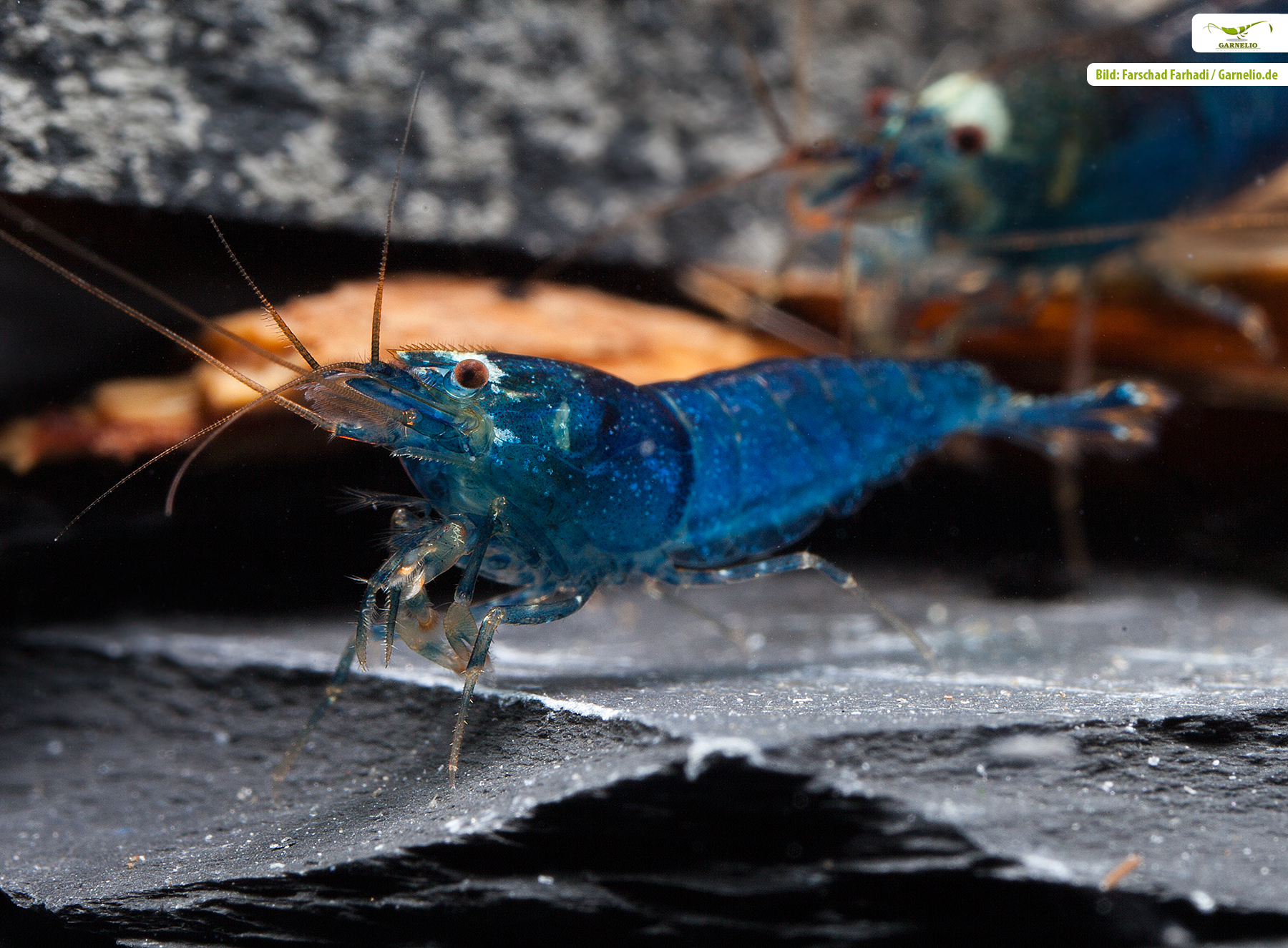
Remedy for weak or gradual poisoning
Please never use stale water from copper pipes or warm water, which would dissolve much more copper. Drain the water well from the pipe before changing the water, and if necessary, simply let cold water sit in front of the heater for a day so it can come up to temperature.
If you suspect that rotting spots in the substrate may be responsible, proceed as described in the article"Deadly trap - rotting spots in the aquarium substrate" in our blog.
Shrimp death due to moulting problems
Moulting problems are sometimes the result of a bacterial infection, but they can also be caused by malnutrition. A single shrimp that twitches conspicuously, shrimp with an overly visible broad light band between the head carapace and the hind body, or shrimp that have the gill covers sticking out strangely or that have visible scraps of old skin on them are all suffering from molting problems or mis-shedding.
Remedy for moulting problems
In case of moulting problems due to malnutrition, it is worthwhile to resort to a mineral feed and otherwise to high-quality shrimp food. NatureHolic MineralFeed and NatureHolic MainFeed, for example, have been specially tailored to the needs of shrimp. In case of moulting problems due to weakening by stress or by a disease, you need to treat the disease or eliminate the source of stress. You can read how to do this earlier in this blog article.

Shrimp death due to old age
If a very large single animal dies, you don't necessarily need to panic. It is quite possible that the animal had reached its age and simply died due to old age. Usually very old shrimp can no longer manage the strenuous molting process.

